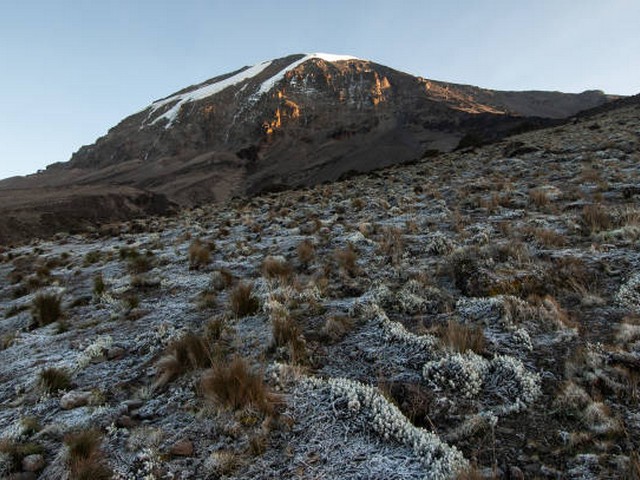Leave No Trace Trekking on Kilimanjaro: A Journey Towards Sustainable Adventure
Embracing the Beauty, Preserving the Legacy
Mount Kilimanjaro, the towering giant of Africa, stands as not just a natural wonder but as a beacon to adventurers worldwide. Each year, thousands lace up their boots, inspired to conquer its heights and bask in the breathtaking vistas from its summit. However, as stewards of this magnificent mountain, it is our collective responsibility to ensure our adventures do not tarnish the very beauty we come to experience. At Kilimanjaro Centre for Trekking and Ecotourism (KCTE), we champion the "Leave No Trace" principles on Kilimanjaro, ensuring every trekker’s footprint is as light as the mountain air. Join us as we explore how you can participate in preserving Kilimanjaro’s magic while embarking on the adventure of a lifetime.
Understanding Leave No Trace
What is Leave No Trace?
Leave No Trace (LNT) is a set of ethics promoting conservation in the outdoors. It’s about making better choices to keep the wild untouched by human presence. On Kilimanjaro, adopting these principles is crucial due to its ecological sensitivity and the volume of trekkers it attracts.
The Seven Principles Tailored for Kilimanjaro
- Plan Ahead and Prepare: Know the regulations and special concerns for the environment you’ll visit. KCTE provides pre-trip information to ensure you’re ready.
- Travel and Camp on Durable Surfaces: Stick to marked trails and campsites.
- Dispose of Waste Properly: Pack it in, pack it out. This includes everything down to your smallest piece of trash.
- Leave What You Find: Preserve the past: examine, but do not touch, cultural or historic structures and artifacts.
- Minimize Campfire Impacts: Campfires are not allowed on Kilimanjaro, so bring a lightweight stove for cooking and enjoy natural warmth.
- Respect Wildlife: Observe wildlife from a distance. Do not follow or approach them.
- Be Considerate of Other Visitors: Respect other trekkers and protect the quality of their experience.
Why Does Leave No Trace Matter on Kilimanjaro?
Kilimanjaro is not only a mountain but a fragile ecosystem that’s home to unique flora and fauna. The increasing footfall has led to trails being worn down and litter accumulating, which poses a threat to this delicate habitat. By practicing LNT, we ensure that the mountain will continue to be a source of wonder for future generations.
How Can You Practice Leave No Trace on Your Trek?
Before the Trek: Educate Yourself
Before setting foot on Kilimanjaro, educate yourself about the mountain’s environment. KCTE offers comprehensive guides and pre-trek briefings focusing on LNT principles.
During the Trek: Embrace Eco-friendly Practices
- Solid Waste Management: Carry all trash, including organic waste like fruit peels, to dispose of after descending.
- Sanitation: Use toilet facilities provided along the route. Where none are available, bury human waste in catholes dug 6 to 8 inches deep.
- Water Use: Avoid using soaps and detergents in streams or ponds. Carry water for washing or use biodegradable soap sparingly.
Gear and Equipment: Choose Wisely
Opt for high-quality, durable gear that won’t easily break and leave parts behind. Renting equipment from KCTE can ensure that you have suitable, environmentally friendly gear.
The Role of KCTE in Promoting Sustainable Trekking
At KCTE, we are committed not only to offering memorable treks but also to ensuring the longevity of Kilimanjaro’s natural beauty. We rigorously train our guides and porters in LNT practices and engage in regular clean-up campaigns to keep Kilimanjaro pristine.
Beyond the Trek: The Global Impact of LNT
Adopting LNT on Kilimanjaro resonates beyond the borders of Tanzania. It sets a precedent for conservation globally, inspiring trekkers worldwide to adopt mindful practices that protect our planet’s natural treasures.
Join Us in Making a Difference
Choosing to trek with Kilimanjaro Centre for Trekking and Ecotourism (KCTE) means aligning yourself with a team that prioritizes the mountain’s health and your experience. Every step you take can help preserve Kilimanjaro’s legacy. Are you ready to be a part of this vital movement?
Frequently Asked Questions (FAQ)
1. How hard is it to follow Leave No Trace principles on Kilimanjaro?
Following LNT principles requires awareness and preparation, but it is not difficult. With guidance from KCTE, trekkers can easily adopt these practices.
2. Can I make a campfire on Mount Kilimanjaro?
No, campfires are not allowed on Kilimanjaro due to the risk of forest fires and the scarcity of wood resources at high altitudes.
3. What should I do if I see others violating LNT principles?
Politely remind them of the importance of LNT. If the behavior continues, report it to your guide or a park official.
4. Does KCTE provide training on LNT before the trek?
Yes, KCTE includes a briefing on LNT principles in our pre-trek preparations to ensure all our clients understand and can implement them during their climb.
Conclusion: Your Call to Action
Mount Kilimanjaro calls not just for climbers but for protectors. By embracing Leave No Trace trekking, you contribute to preserving this iconic mountain for those who will follow in your footsteps. Book your climb with Kilimanjaro Centre for Trekking and Ecotourism (KCTE) today, and join a community of responsible trekkers dedicated to the conservation of one of the earth’s greatest natural wonders.
Are you ready to take the pledge to trek responsibly? Contact us now to start your sustainable journey to the roof of Africa.




